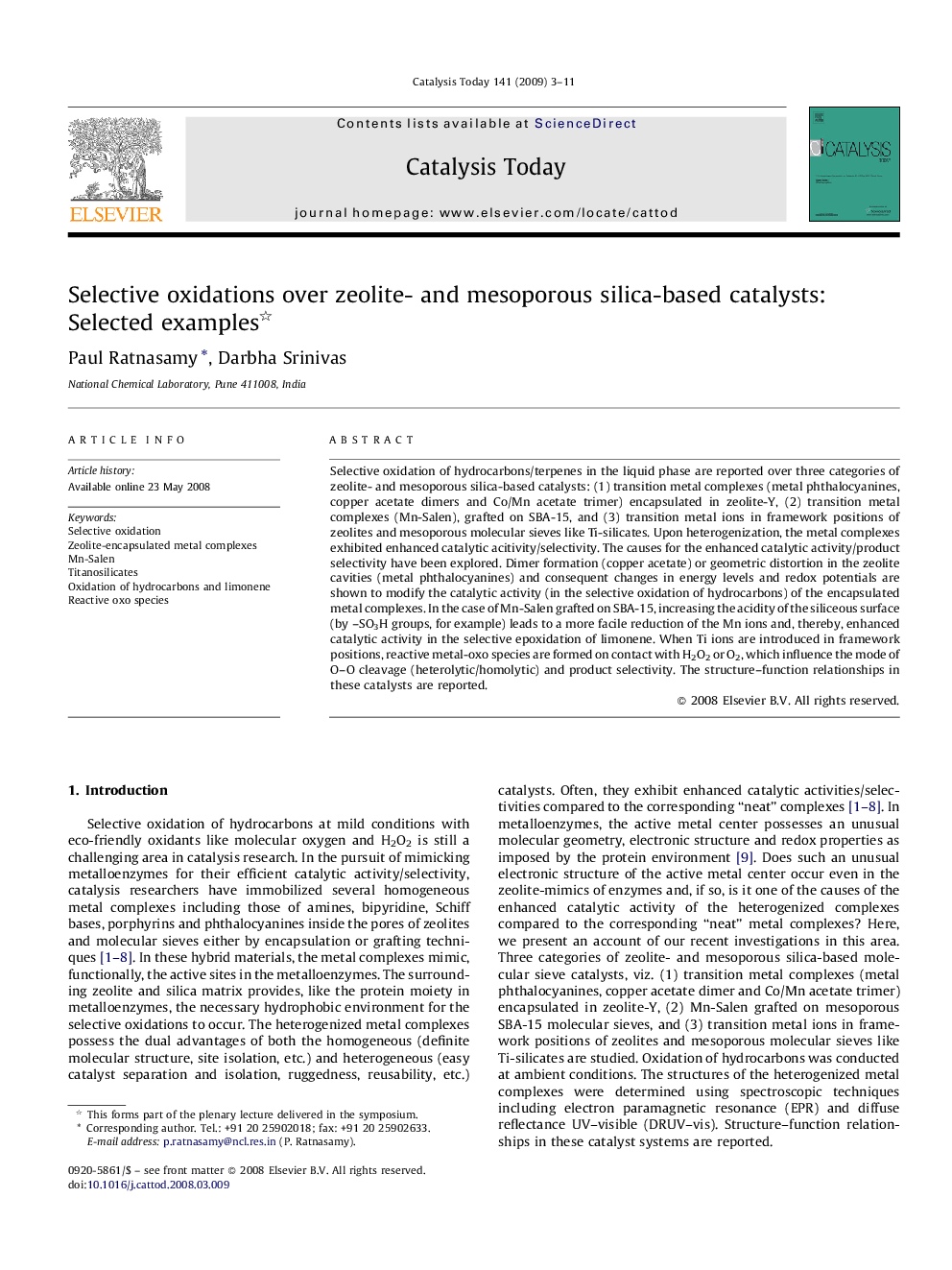| Article ID | Journal | Published Year | Pages | File Type |
|---|---|---|---|---|
| 56989 | Catalysis Today | 2009 | 9 Pages |
Selective oxidation of hydrocarbons/terpenes in the liquid phase are reported over three categories of zeolite- and mesoporous silica-based catalysts: (1) transition metal complexes (metal phthalocyanines, copper acetate dimers and Co/Mn acetate trimer) encapsulated in zeolite-Y, (2) transition metal complexes (Mn-Salen), grafted on SBA-15, and (3) transition metal ions in framework positions of zeolites and mesoporous molecular sieves like Ti-silicates. Upon heterogenization, the metal complexes exhibited enhanced catalytic acitivity/selectivity. The causes for the enhanced catalytic activity/product selectivity have been explored. Dimer formation (copper acetate) or geometric distortion in the zeolite cavities (metal phthalocyanines) and consequent changes in energy levels and redox potentials are shown to modify the catalytic activity (in the selective oxidation of hydrocarbons) of the encapsulated metal complexes. In the case of Mn-Salen grafted on SBA-15, increasing the acidity of the siliceous surface (by –SO3H groups, for example) leads to a more facile reduction of the Mn ions and, thereby, enhanced catalytic activity in the selective epoxidation of limonene. When Ti ions are introduced in framework positions, reactive metal-oxo species are formed on contact with H2O2 or O2, which influence the mode of OO cleavage (heterolytic/homolytic) and product selectivity. The structure–function relationships in these catalysts are reported.
